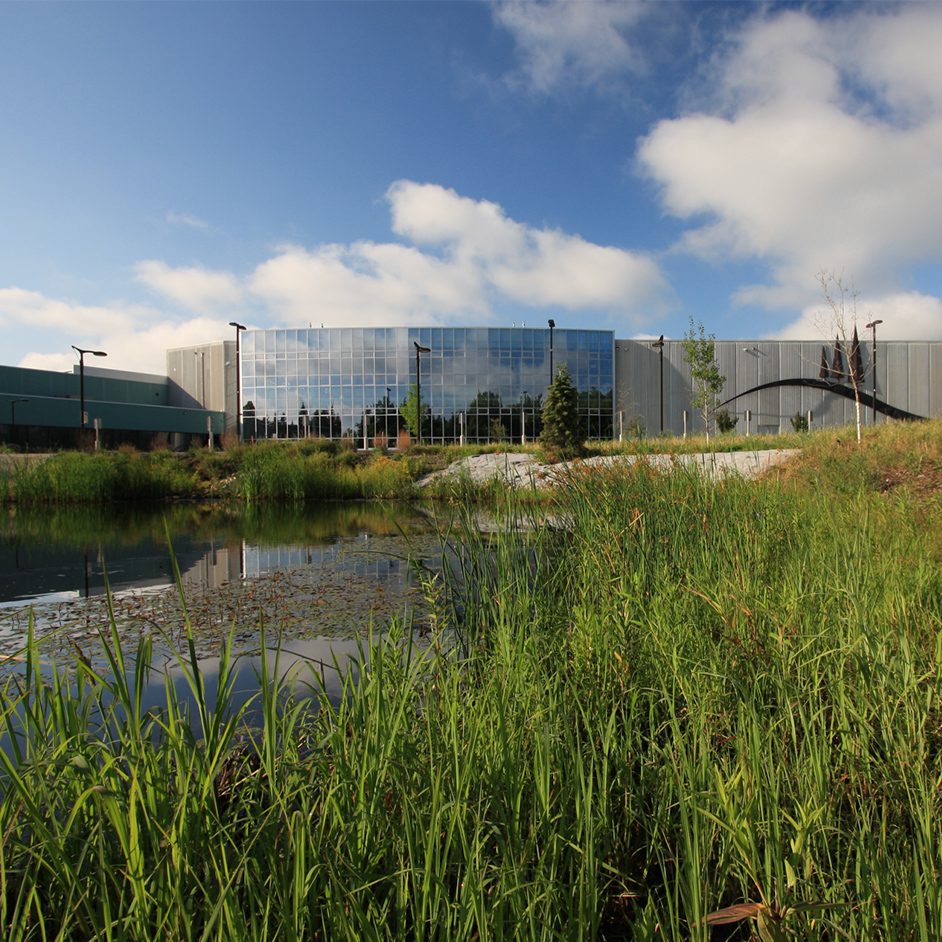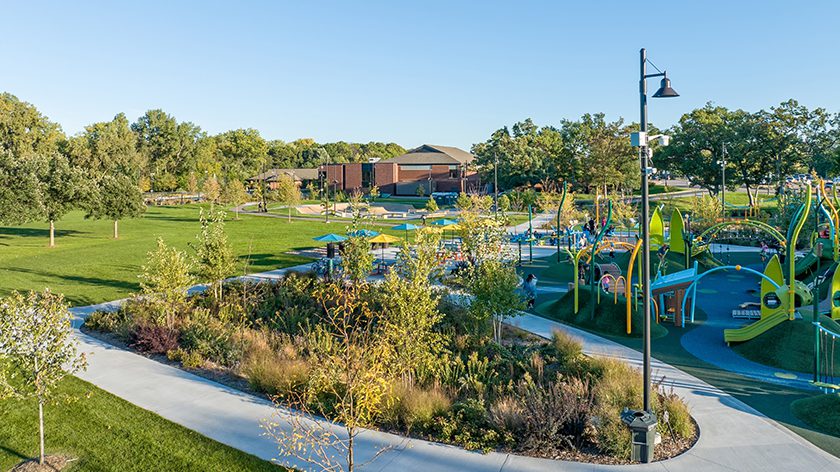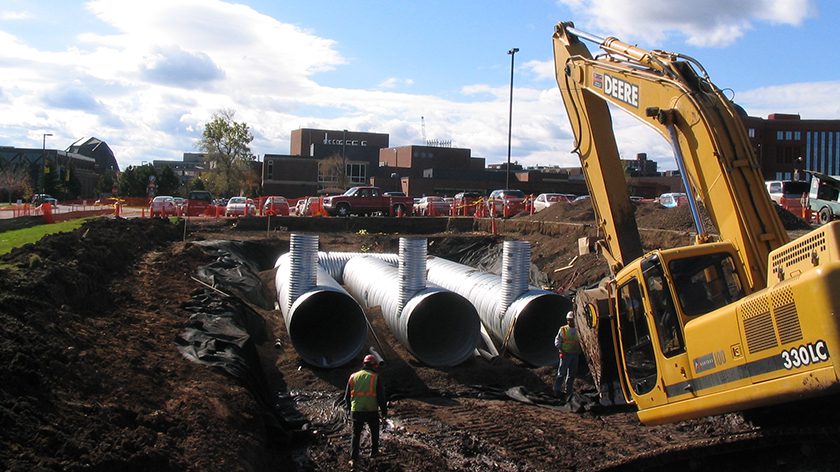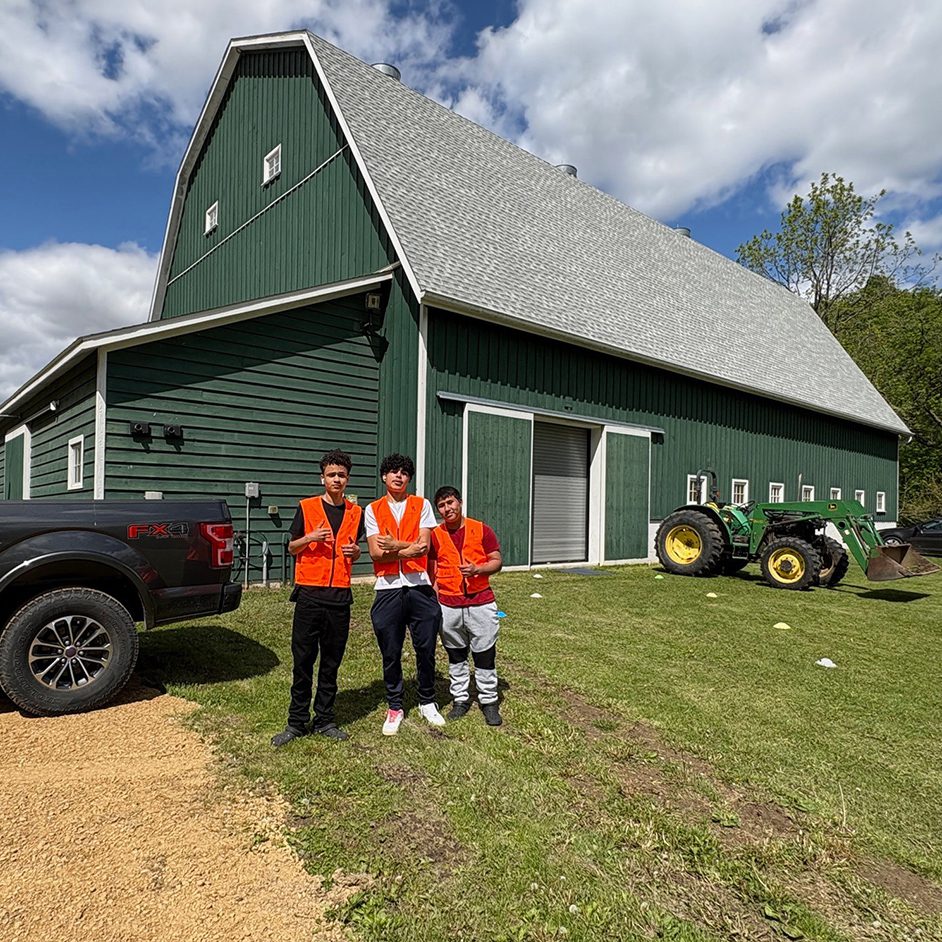
Stormwater management has evolved in recent years. Traditionally, stormwater systems focused on flood prevention, ensuring the system had enough capacity to carry water away. Detention ponds were used to temporarily hold stormwater excess and limit off-site flow rates.
While managing flooding is still important, surface water quality is a growing concern as well. Stormwater runoff often contains pollutants like sediment, nutrients (e.g., phosphorus), and heavy metals. These pollutants can seriously damage lakes, rivers, and groundwater if not addressed near their source.
Recent changes in regulations and practices may affect how stormwater is treated on your site. Here are some common client questions — and answers.
Are stormwater ponds still used to manage water?
Yes, stormwater ponds are still widely used and can be very effective, especially for settling suspended solids and other pollutants. But there’s a growing emphasis on reducing runoff volume altogether, not just storing it.
This is where natural solutions — like rain gardens and biofiltration swales — come into play. These are designed to let water soak into the ground, reducing how much runs off your property and carrying pollutants into nearby waters.

What are the latest rules that property owners need to be aware of?
If you’re in Minnesota, the MS4 permit (Municipal Separate Storm Sewer System permit) is a key regulation to be aware of. Updated in 2020 and due for renewal in 2025, it sets stricter requirements for reducing stormwater runoff volume through infiltration practices.
A big change is this: You now need to account for reconstructed surfaces, not just new impervious areas. This means that if you rebuild a street and/or replace utilities, you might need to address the runoff those surfaces generate.
Are all projects treated the same under the MS4 rules?
No, they are not. Linear projects — such as roads or long driveways — have slightly different standards. In some cases, if infiltration can’t be achieved cost-effectively, the requirement might be waived. But generally, property improvements still need to show a good-faith effort to reduce runoff and improve water quality.
Also, many local governments or watershed districts in Minnesota have adopted even stricter standards than those required by the MS4 permit. So it’s important to work closely with your civil engineer to ensure you’re in compliance at every level.
What are some common onsite stormwater solutions to consider?
There are a range of solutions that can be scaled to fit your property. Common options include:
- Rain gardens – shallow vegetated basins that absorb runoff.
- Biofiltration swales – vegetated channels that filter and slow water.
- Infiltration trenches or dry wells – gravel-filled pits that collect and soak in water.
- Tree boxes – small systems around urban trees that also filter water.
- Permeable pavers or pavement – allow water to pass through the surface.
These systems can improve water quality and even add aesthetic and ecological value to your property.
What if the property doesn’t have much green space?
If you lack green space, your civil engineer might suggest permeable surfaces like pavers or underground infiltration systems. These include:
- Perforated pipes
- Open-bottom arch systems
- Underground vaults
These systems are typically more costly and complex to maintain, so creative planning is key to minimize long-term costs and maintenance needs.

Are there alternatives if infiltration isn’t an option on your property?
Absolutely. Infiltration isn’t always appropriate — for example, if your soil doesn’t drain well (like clay), if the groundwater table is high, or if you’re near a contaminated site like a gas station or hazardous waste facility.
In these cases, possible filtration and treatment methods include:
- Stormwater wetlands
- Vegetated filter strips
- Wet ponds
- Filtration basins
- Green roofs
- Stormwater harvesting systems
These approaches still reduce pollutant loads and help protect local water quality.
What’s the takeaway for property owners?
Stormwater regulations are evolving, and so are the solutions. Whether you’re building new or renovating, working with a knowledgeable civil engineer can help you navigate the requirements, optimize your site layout, and implement cost-effective, long-term solutions to reduce runoff and protect water quality — all while improving the appearance and value of your property. ▪
Need a reliable drainage plan that meets all stormwater related requirements? LHB’s team of water-resources experts can help. Reach out to our civil engineering team today.



